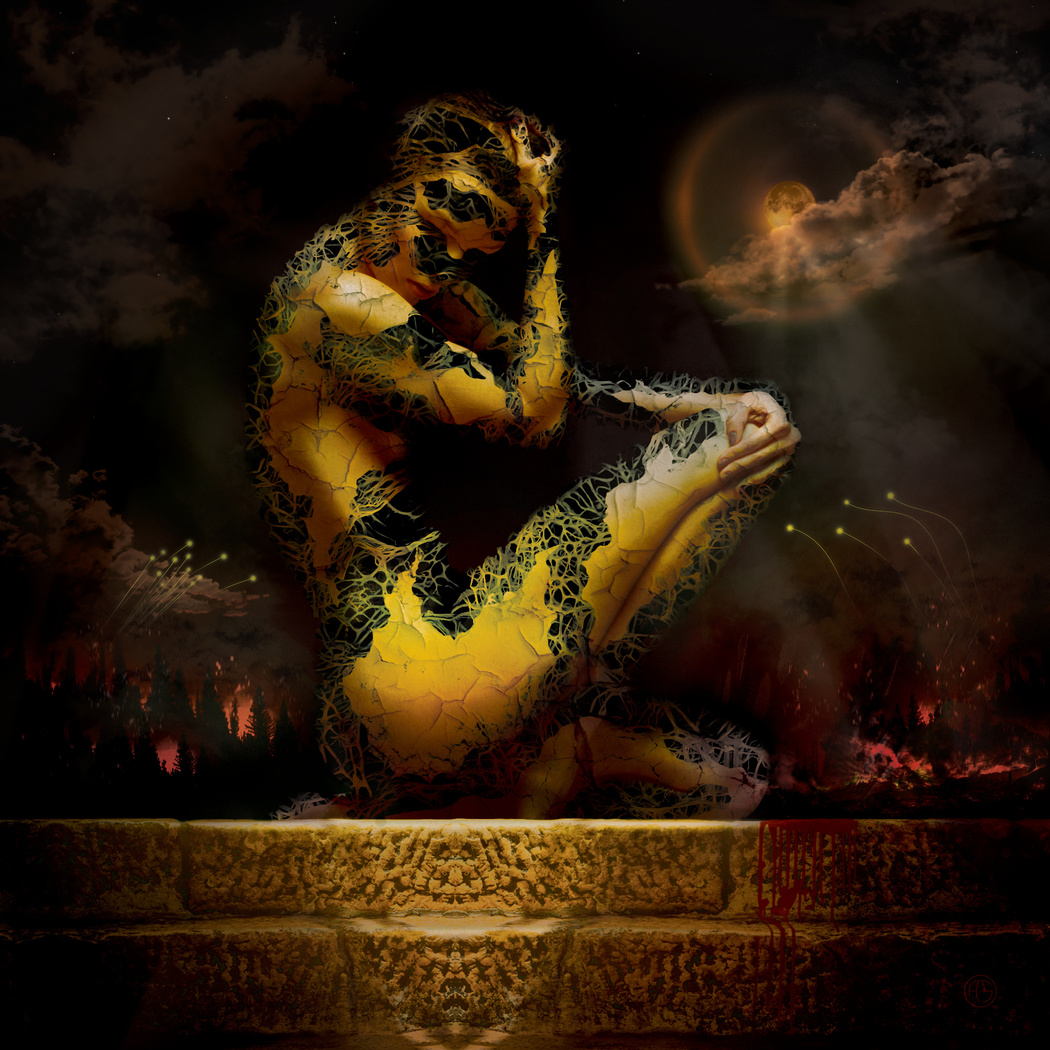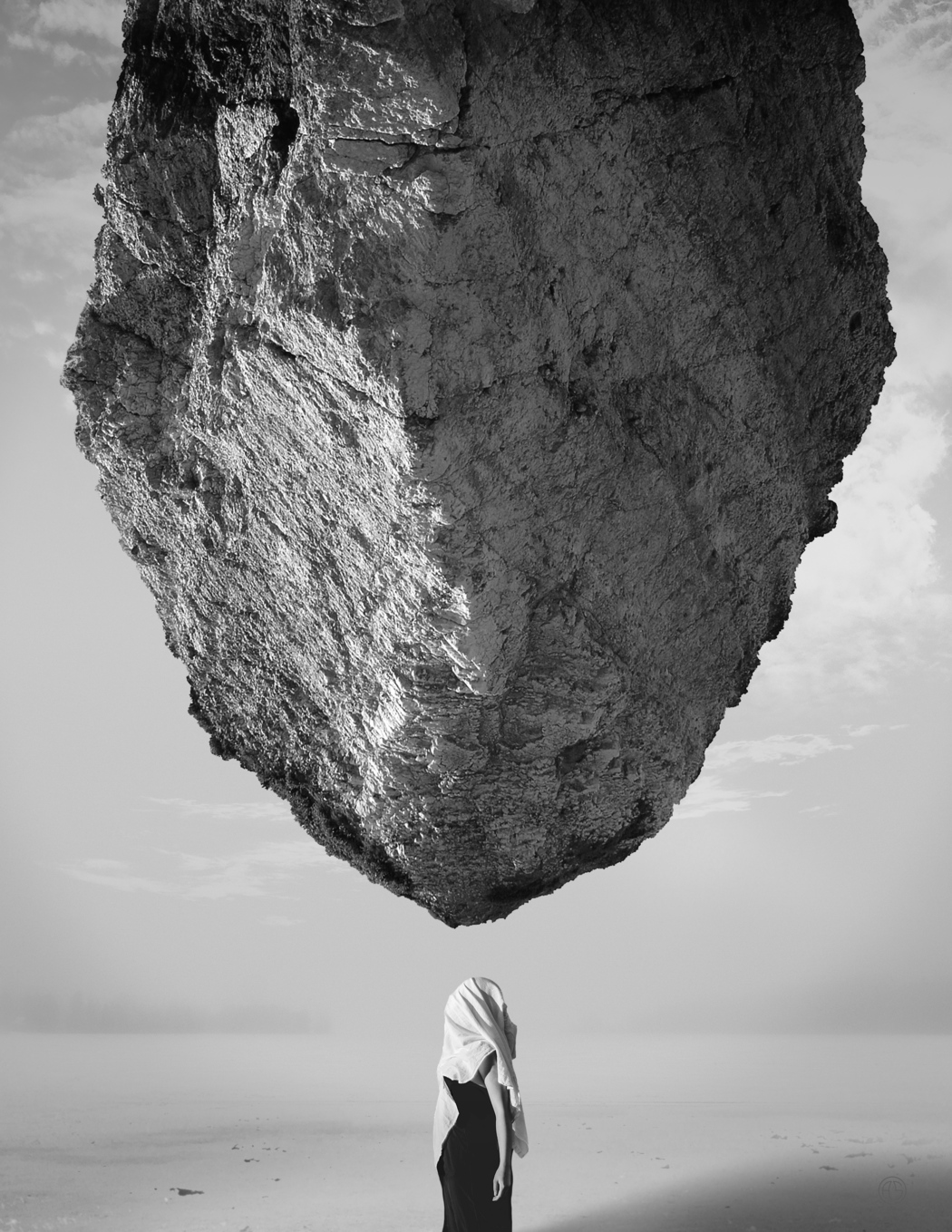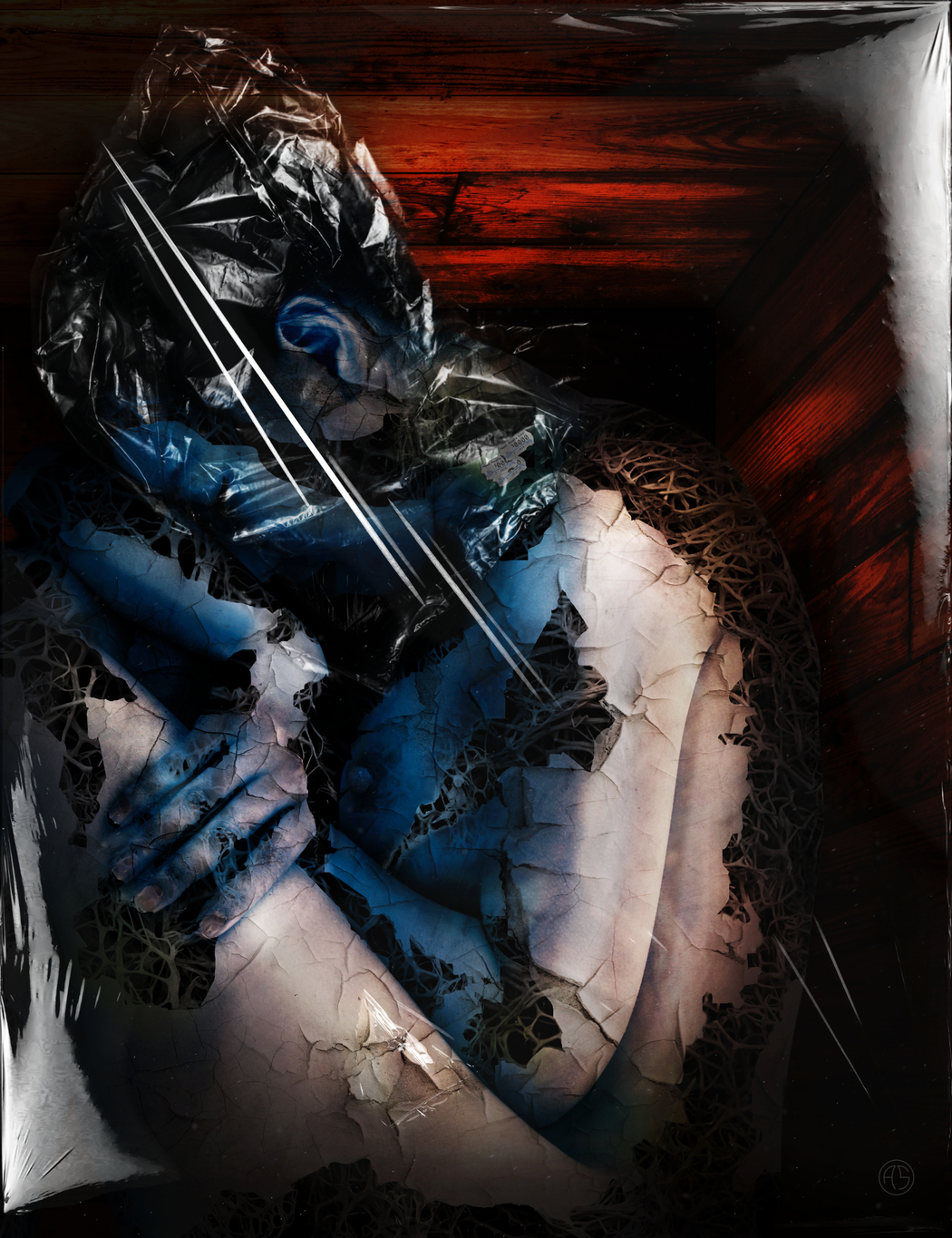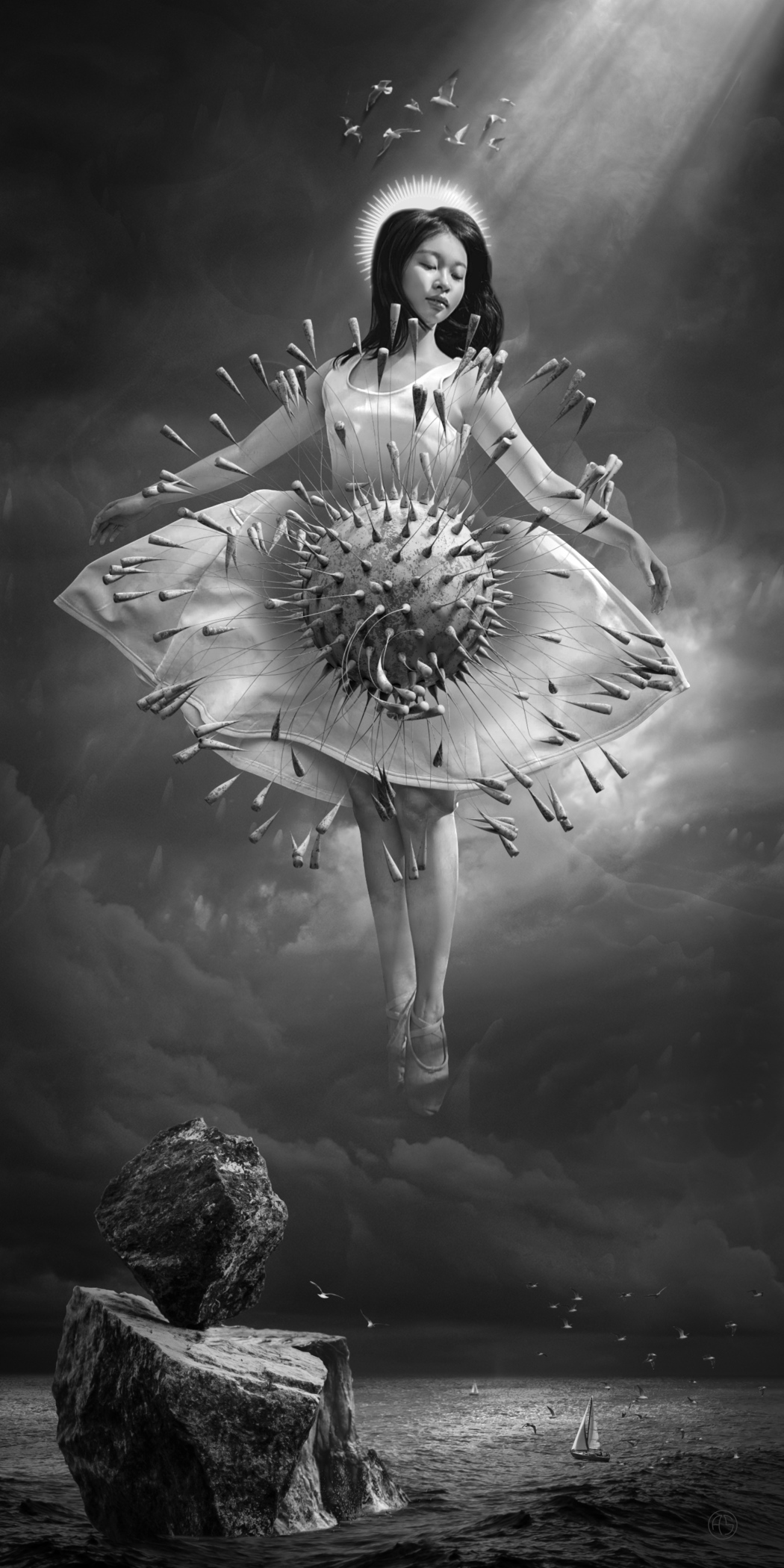Adam Strange
Year of birth: 1970.
Where do you live: Canada.
Your education: 1992 graduate of Fine Art, Drawing and Painting, at the Ontario College of Art, (now O.C.A.D.), Toronto, Canada.
Describe your art in three words: Zozobra, Iconoclast, Weapons.
Your discipline: Digital artist resistance fighter.
Website | Instagram
Your work is heavily influenced by the Dada and Surrealist movements. How do you see these influences manifesting in your digital artwork today?
Well, these artists are the pioneers in a long line of movements/artists cutting up, destroying, and assembling images in response to significant times like wars, oppressions, and uprisings. All of these movements were responses to their cultural environment and times. They sought to break down or destroy established systems, whether technological, cultural, or political, or to criticize politicians or philosophies. Other artists, while many held radical political ideologies, turned inward to seek freedom in the unconscious from those same systems. Both are movements of anarchistic action, opening new ways of thinking and seeing. This approach to life and art is immemorial and perpetual, and includes us all. The content of art may reflect the contemporary, but the context may be the same – tearing down oppressive systems and providing space for new ideas and realities to exist. This reference also serves the purpose of context as an entry point to my work for those who need it. However, the word surreal is now in the general lexicon of everyone who needs a word to describe something they were surprised by, but it’s consistently applied to moments of actual banality. The word has been stripped of any etymological meaning through generations of misuse. This, in turn, has led people to view the surreal as simply an aesthetic style instead of a revolutionary mode of creative activity of an artist.
 Adam Strange | Monument Of Corruption | 2023
Adam Strange | Monument Of Corruption | 2023
You mentioned that your art aims to reflect, respond, and critique the world around us. Can you describe a recent piece where this intention is most evident?
Sure, the work “Sold Down the River” is a good example, but all my work follows this aim to a greater or lesser degree. This work is about the environment and the corruption behind its destruction. Repeatedly hearing the news of the fossil fuel industry poisoning communities around the world, I wonder who or what will be alive to enjoy what remains of this toxic legacy. In many cases, there is a social component to my work; however, I do not like to be too specific about particular issues, but rather reach for the essence of a situation. I’m not interested in the personal lives of artists or their material discoveries. The existential issues facing the human race, I think, outweigh the insights from navel-gazing.
How has your transition from traditional art forms to digital media influenced your creative process?
Well, there are many differences I could go on about, but the biggest change is how I create pictures. I have almost completely given up drawing, save for quick thumbnail sketches to record an idea. Instead, I combine writing ideas down, visualization, and chance to develop my art. In fact, I seek out the “state-of-being” or emotional response to the world as the starting point and enter the process from there. Technology, in part, dictates the form of the work. With digital technology changing so fast, the tools of expression may simulate any other art form to a close degree, but mastering the tools to blur the line between analogue and digital media is what I attempt to achieve. Digital art is portable, reproducible at a variety of scales, on a variety of substrates, and through other technological means to be viewed. What’s interesting is that the actual electronic file is not the image but made of the same material as everything else digital. One could say, the digital artwork doesn’t really exist, but technology allows us to “teleview” something unviewable with the naked eye.
 Adam Strange | The Weight | 2019
Adam Strange | The Weight | 2019
In your career, you’ve balanced between graphic design and fine art. How do these two disciplines intersect in your work?
I hope they don’t, but you can’t remove the skills or influence acquired in one place and not find them in another. Fine art and graphic design are like oil and water. I think the main and fundamental difference is the intent required between these two opposing activities. One is for commercial manipulation, the other is for personal liberation. One is a process shared between a group of “owners,” the other is a singular activity channeling your unfiltered expression. While there are crossover skills in technology and picture making, my work is not made as a commercial commodity (unless as a sardonic critique of commercialism, i.e., Death Matters and the Abolition Arts); it’s the intent that counts. However, each of these disciplines is a means of communication, but the content communicated follows different purposes. Thankfully, I have mostly cast off the shackles of “design thinking.”
The themes of politics and social issues are central to your work. How do you approach such heavy subjects in your art without overwhelming the viewer?
It’s been a steady descent into my current subject matter of corruption, and it IS my intent to overwhelm the viewer. I consider it a success if the viewer has a strong emotional response, which some people do. However, people also self-censor by simply not taking the time to develop a relationship with the artifact and therefore not having any meaningful reaction to the work. The context in which you view the work also plays a big role in this, whether it’s viewed on a screen or printed, hanging in a gallery. People should be repulsed, sickened, and saddened when engaging with my work, as people should have those same reactions to the real-world events of human activity, but few do. In recognition of the desensitization of the viewer, I feel it is imperative to make art with a social message to respond to the urgency of the situation. This is the work to be done, and my choice of weapon is art.
 Adam Strange | Packaged Goods | 2024
Adam Strange | Packaged Goods | 2024
Can you explain your method of recontextualizing found photographs and digital assets in your artwork? What role does chance and accident play in your creative process?
Recontextualizing content, regardless of discipline or medium, is how all cultural evolution happens. We build new monuments on top of the ones we destroy, we observe the universe through new technology, and the systems that govern that universe get rewritten. We play old songs at a different speed and spawn a whole new musical genre for a generation. When we cut up an image, we do it for different ends, but the process of destroying images, removing the content or context from an image, is the first step to controlling the meaning of images wherever they may exist. Slicing and suturing images is how people can reclaim control over their visual environment and narratives of images in the public sphere.
The photographic image has connotations we associate with recorded history, reality, and truth. So, like artists before me, I subvert those collective associations by blurring the lines between truth and illusion. This effect is similar to semantic satiation – we might call it “visual satiation.” It appears photographic on many levels, but it’s not a photograph. It’s imaginative, but it’s not surreal. This process results in the viewer confronting the very mechanism that is the source of their anxiety in determining what they are looking at. If, in the end, the image strips all connotations or associations, and the viewer is left in a space of neither realism nor illusion, meaning or absurdity, then my work might have the possibility of changing perceptions.
Stock photographs can represent a repository of global viewpoints, locations, and moments in time, or the mediocrity of the world through censored images, or as a collection of simulated realities no longer existing, any of which an artist can harvest the aesthetic or emotional content and use it as ammunition for their own work. Like all collage artists, I engage in iconoclasm as a means to destroy the meaning of existing content, then incorporate those disparate fragments into a new context, thereby creating new meanings and ideas. During the creative process, I may plow through hundreds of photos out of the millions available, with or without intent, sometimes allowing the emotional response to direct the selection. Like finding weeds in a farmer’s crop, images are selected for consideration. Relationships between the selected photos can also randomly occur, changing the course of the picture into an unknown direction. All these results can be used in a variety of ways, such as leading to further refinement of the original idea, or allowing the picture to evolve from the new relationships between the harvested photos and my intentional selections.
 Adam Strange | Madonna of the Sea | 2022
Adam Strange | Madonna of the Sea | 2022
Having returned to fine art after a focus on graphic design, what new perspectives or skills have you brought back into your artistic practice?
Well, I’m finally able to express my ideas of the world through pictures again. I doubt that I would be doing photomontage if not for my time in graphic design. In fact, photomontage and image manipulation might be the common activity on the internet today, and technology is making it easier all the time. Thirty years of computer use has given me the skills to be able to create my work without the feeling of the tools as a barrier to my expression. The other focal point of design is communication. I’ve concerned myself with how communication happens within the limitations of images and language, and its effects on expression. On the fine art side, I still engage in, incorporate, and utilize all the teachings of the old-master techniques I can – composition, perspective, color, etc. Working digitally allows these methods to be done in a virtually non-destructive way, giving me unprecedented flexibility in the development of the image compared to a traditional painting.

Leave a Reply